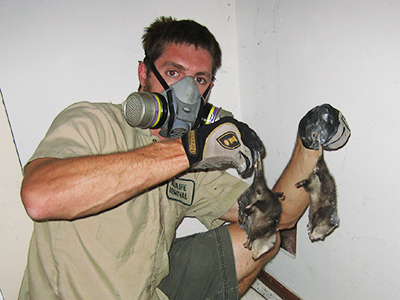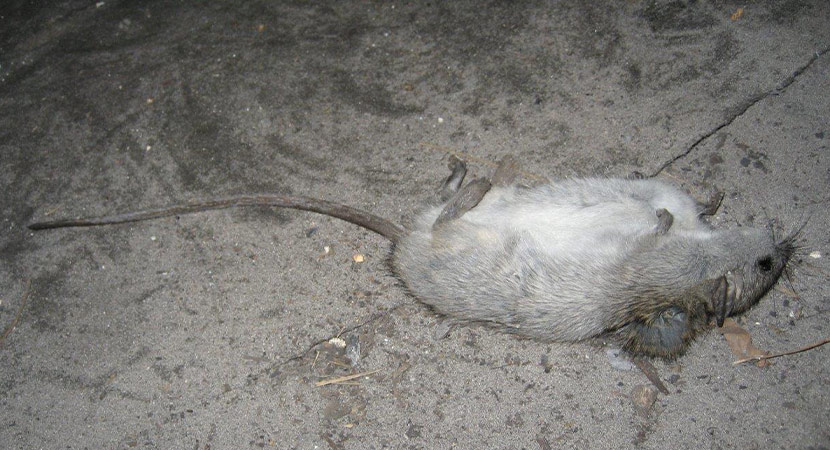Call me: 321-775-9734
Welcome to Orlando Dead Animal Removal! Got a terrible smell in your house, or do you see a dead critter on your property? We are an animal control company specializing in the removal of dead animals from your home, attic, basement, walls, yard, or any part of your property. You clearly don't want a dead animal in your house. Carcasses attract flies and give off terrible smells, not to mention the potential diseases rotting flesh can cause. Whenever we remove dead animals, we use 100% safe methods and make sure to disinfect your home and get rid of all traces of odor. Click here for Free Roadkill Removal and click here for Dead Pet Body Removal. For deceased wild animals in your home or property, call us anytime at 321-775-9734 to schedule an appointment for today! We come out fast! Some of the services we offer include:
- Dead Animal Removal
- Foul Odor Diagnosis
- Full Property Inspections
- House Damage Repairs
- Dead Body Location Services
- Proper Carcass Disposal
- Cleanup & Decontamination Services
- Deodorization Services
CALL US ANYTIME AT 321-775-9734

Dead animals inside our property are disgusting and dangerous. If you leave the dead body rotting for days, there's a good chance that it has been infested with insects. The parasites that once feed on them will be looking for a new host, and the likely target would be you or your pets. The carcass may also be contaminated and can spread zoonotic illnesses. Bacteria and fungal spores that they will release as they rot can also lead to other health complications. To prevent these repercussions, we will conduct an intensive analysis of your property. It will help us determine the state of the decomposition, the extent of the damage, the possible entry point of the animal, etc. We offer a one-stop-shop for all your dead animal needs. Our services include a full inspection, removal and disposal of the dead animal, sanitation, decontamination, neutralization of the odor, and prevention services. Our offerings come with a satisfaction guarantee; we will redo, replace, and fix it if it falls short of your expectations. Call us today to receive your free quote with no obligation. You can also reach out to us if you live outside of our serviceable area. We will make the necessary arrangement to make anything possible.
What Prices Do We Charge?
Learn about dead animal removal costs - each situation is different!
What if you found roadkill or a dead animal such as a deer in a public place, and you want the city or Orange County services to remove it for free? Click here for Free Orange County Dead Animal Removal services. What if a farm animal like a horse, or your beloved pet dog or pet cat has died and you need the body taken away? Click here for Dead Pet Body Removal.
We are experts in dead animal removal, and take our job seriously. When removing dead animals, we do a COMPLETE job — not only do we remove the dead animal from your home or yard, we also decontaminate the area, deodorize it, and dispose of the animal or cremate it. If you aren't sure whether the stench in your house is due to a rotting carcass or another reason, we can sniff it out with our noses from our years of experience. We remove dead raccoons, dead opossums, dead skunks, dead squirrels, dead birds, even dead dogs and cats. We frequently remove dead rodents from inside walls, because poison kills rats and mice, who die in your house. We completely solve your dead animal problem by taking these steps:
- Sniff out the dead animal if it is somewhere in your home
- When necessary, for example if the animal is in a wall or under your house, cut a hole to remove the animal
- Remove the dead animal, safely and completely (and seal the hole if needed)
- Finish the job by decontaminating and deodorizing your home
- Properly dispose of the dead animal through incineration or other means
- Prevent it from happening again by finding out how they got in your house
Dead animal carcass removal is specialty work. Sometimes the job is simple, such as a dead opossum in the yard, in which case we can simply wear our gloves and respirator mask, bag the carcass, and take it away for incineration. Sometimes this is more complex, such as when the dead animal is under a home crawlspace, under a porch or deck or shed. Or if the animal is larger, such as a dog or a deer. The most complex cases are dead animals inside the house. The animal may have died inside the attic, or down in the walls, or the duct work, or any other part of the architecture. You may have a bad smell in your home, and you're not even sure what's causing it. We've removed not just dead animals, but rotting food, bad mold, etc. We specialize in locating the source of the smell, and we very commonly cut a hole in the ceiling or wall to remove the animal. We remove every bit of the carcass, mop up the juices, vacuum the maggots, spray it and wipe it down with disinfectant, cleaner, and we repair the hole we cut. In some cases we use ozone machines to neutralize odor.
Orlando Dead Animal Tip: Life Cycle of Fly on Dead Carcass

Asides from the strong stench given off by a dead animal, the presence of thousands of flesh flies and blowflies is another strong indication of a nearby carcass. Flies look for carcasses they can lay their eggs on so that once their eggs hatch, there is a food source for them to thrive. Flies have an undeniable superpower when it comes to finding carcasses! Flies can sense a dead animal just 10 minutes from the point of death. This makes them one of the first species to colonize a dead animal, and this helps accelerate the decomposition process. In this post, we explore the life cycle of flies on dead carcasses.
Eggs
As indicated earlier, the first stage in the life cycle development of flies is for a female fly to lay her eggs on the carcass. A single adult blowfly can lay about 250 eggs. The ideal spot for laying their eggs is on openings around the carcass, like a wound, eyes, anus, ears, and more.
While most species of flies hatch their eggs outside of their bodies, some species of flesh flies hatch their eggs inside their bodies. Hatching typically takes between 24 and 45 hours after the eggs are laid.
Larva
After the eggs hatch, the larvae that result from them are commonly referred to as maggots. These maggots undergo three major stages.
In the first stage, the larvae secrets enzymes to help with the breaking down of protein in the carcass. This makes it easier for them to feed on the semi-liquid bodily fluids. Their actions to derive energy from the carcass directly breaks down the carcass. As they grow, they shed their exoskeleton within a day and emerge as second-stage maggots.
These are bigger-sized maggots, and they continue the same process. They continue to produce enzymes to break down protein in the carcass, which they feed on. However, these maggots now move around in maggot mass. Maggot mass is exactly what it sounds like - maggots that feed together in groups. Because there are a lot of them, the heat emission from their digestive tract can heat that area in the carcass up to 50 degrees Celsius. This higher temperature further accelerates the decomposition process. After about a day, they shed their exoskeleton for the second time and proceed into the third stage.
In the third instar, the maggots still move together, but they greatly increase in size. After about two days, they shed the second exoskeleton and proceed into the pre-pupa stage.
Pupae
This is the third major life cycle in the development of flies. After the third instar is complete, the pre-pupa larvae wander from the carcass till they find a suitable pupation site. Most times, they choose to pupate below the soil surface.
Once pupation commences, the flies remain dormant, and they do not feed on anything. It typically takes about four days for the pre-pupa to transform into a pupa.
The pupa continues to reside within the puparium while it undergoes a transformation from a larval body to an adult. During this stage, their last exoskeleton hardens and gradually turns from light brown to a black color. The pupa also does not feed during this stage. And within the next 10 days, they emerge from the puparium. Some species of flesh flies can go into a hibernation-like state known as facultative diapause. They will remain in that state until external environmental conditions like humidity, temperature, and light becomes appropriate.
Adults
Once the exoskeleton is fully formed, the adult fly emerges from the puparium. And the males can start mating with adult females right from emergence. However, the female has to find a new carcass that will nourish the eggs she wants to lay. In general, it takes about two days between their emergence and the laying of eggs.
Wrap Up
Note that the timelines we’ve given are broad generalizations, and the actual timelines depend on several factors. However, we can see that the life cycle of blowflies and flesh flies is pretty fast (about three weeks). Although the entire ‘feeding on dead carcass’ seems disgusting, it is very important as decomposition is the earth’s natural recycling mechanism.
We service nearby towns such as Orlando, Winter Garden, Apopka, Winter Park, Ocoee, Windermere, Maitland, Oakland, Lake Buena Vista, Pine Hills, Doctor Phillips, Eatonville, Alafaya, Belle Isle, Hunters Creek, Meadow Woods, Gotha, Bithlo, Bay Hill, Conway, Pine Castle, Azalea Park, Zellwood, Christmas, Wedgefield, Lake Butler, Oak Ridge, Edgewood, Orlovista, Union Park, Lockhart, Holden Heights, Southchase, Paradi.